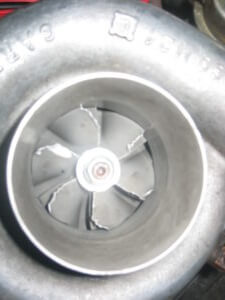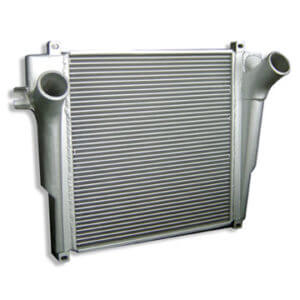Fix turbo failure
Best way to deal with turbo failure
This generation of turbochargers has been out for a while and some are starting to fail. Turbo failure can cause additional expensive engine damage. That’s why you should fix turbo problems early (see turbo failure symptoms below). But if your turbo fails, here’s how to proceed.
Check the terms of your powertrain warranty or extended warranty
Turbo replacement is expensive, so check your powertrain or extended warranty to see if it’s covered. If you bought an extended warranty that covers everything bumper-to-bumper, then chances are it’s covered IF you’ve followed the car maker’s recommended maintenance schedule (see Turbo maintenance tips below). If your warranty is just for powertrain coverage, then the question is this; is the turbo part of the powertrain? I can give an opinions, but my opinion doesn’t matter—it’s the legal language in your powertrain or extended warranty that matters.
Pull out your warranty and head right to the section labeled exclusions. If the turbo is listed in the exclusions section, then it’s not covered. If it is covered, then the warranty should cover the replacement turbo as well as an associated engine damage (read Tubo maintenance section).
What if your turbo isn’t covered by a powertrain warranty or extended warranty?
Obviously, it must be replaced. But first find out why it failed. Turbos spin at up to 200,000 RPMS and require adequate cooling and lubrication. If your vehicle has a cooling related problem and you don’t fix it, the replacement turbo will fail too. The same applies to lubrication—fix it now.
Next, check pattern failure databases and technical service bulletins. Your mechanic has access to pattern failure databases that disclose repeat failures on every vehicle. Many times the car maker and independent shops identify factors that contribute to the failure of a part. Your mechanic should know if any of those contributing factors exist in your vehicle. Then your mechanic should check the car maker’s technical service bulletins to see if the manufacturer has introduced modified components or installation/cleaning procedures since the car was made.
Ask your mechanic to shop for a rebuilt turbo from a reputable rebuilder that offers a long warranty. A rebuilt turbo can cost almost half of the price from a dealer.
Finally, change the coolant, oil and filter and air filter when you install a new or rebuilt turbo.
Causes of turbo failure
The turbo failure symptoms listed here can be caused by other engine issues, so do a thorough check before condemning the turbo.
Sluggish performance: The turbo should kick in and provide a noticeable power boost once you reach 1,000-1,500 RPM. This is called turbo tip-in. If you don’t notice any power boost, check out the turbo.
Check Engine light: Engine performance changes the instant the turbo kicks in. Your car’s computer anticipates these changes and sets a trouble code and check engine light if it doesn’t see those performance changes.
Whining noise: A failing turbo can sound like a dentist’s drill or a siren. If you hear  that kind of noise at turbo tip-in, get it checked out ASAP. If you let it go and the compressor wheel or bearing fail, the fragments can cause engine damage.
that kind of noise at turbo tip-in, get it checked out ASAP. If you let it go and the compressor wheel or bearing fail, the fragments can cause engine damage.
Smoking exhaust: Your engine’s cooling system routes anti-freeze to the turbo bearings to keep them cool. If the seal between the cooling line and bearing fails, the turbo can pump coolant into your engine, causing white/brownish clouds of smoke from your exhaust. A failed oil seal can cause blue/grey exhaust smoke.
Turbo maintenance
Turbos run at high speeds and need plenty of clean oil and coolant to keep the bearings cool. Vehicle equipped with Turbos often require more frequent oil changes. If you haven’t followed that accelerated oil change schedule, the exhausted oil can cause premature turbo failure. The same applies to coolant. Exhausted coolant accelerates electrolysis and causes corrosion. That corrosion can restrict coolant flow, causing the turbo to run hot and fail early.
Since the turbo pulls its air from the air filter box, it’s critical to maintain your air filter, especially if you drive in dusty or sandy conditions. Dust, dirt or sand that passes through the air filter can damage the compressor wheel, causing a drop boost and impeller imbalance.
The turbo operation heats the air, so it must be cooled by an intercooler.  The intercooler is simply a radiator-like device that can be plugged by leaves and rodent debris. The intercooler must be examined and cleaned to cool the boost as much as possible. While checking the intercooler, check the condition of all connecting hoses and seals.
The intercooler is simply a radiator-like device that can be plugged by leaves and rodent debris. The intercooler must be examined and cleaned to cool the boost as much as possible. While checking the intercooler, check the condition of all connecting hoses and seals.
©. 2016 Rick Muscoplat
Posted on by Rick Muscoplat
